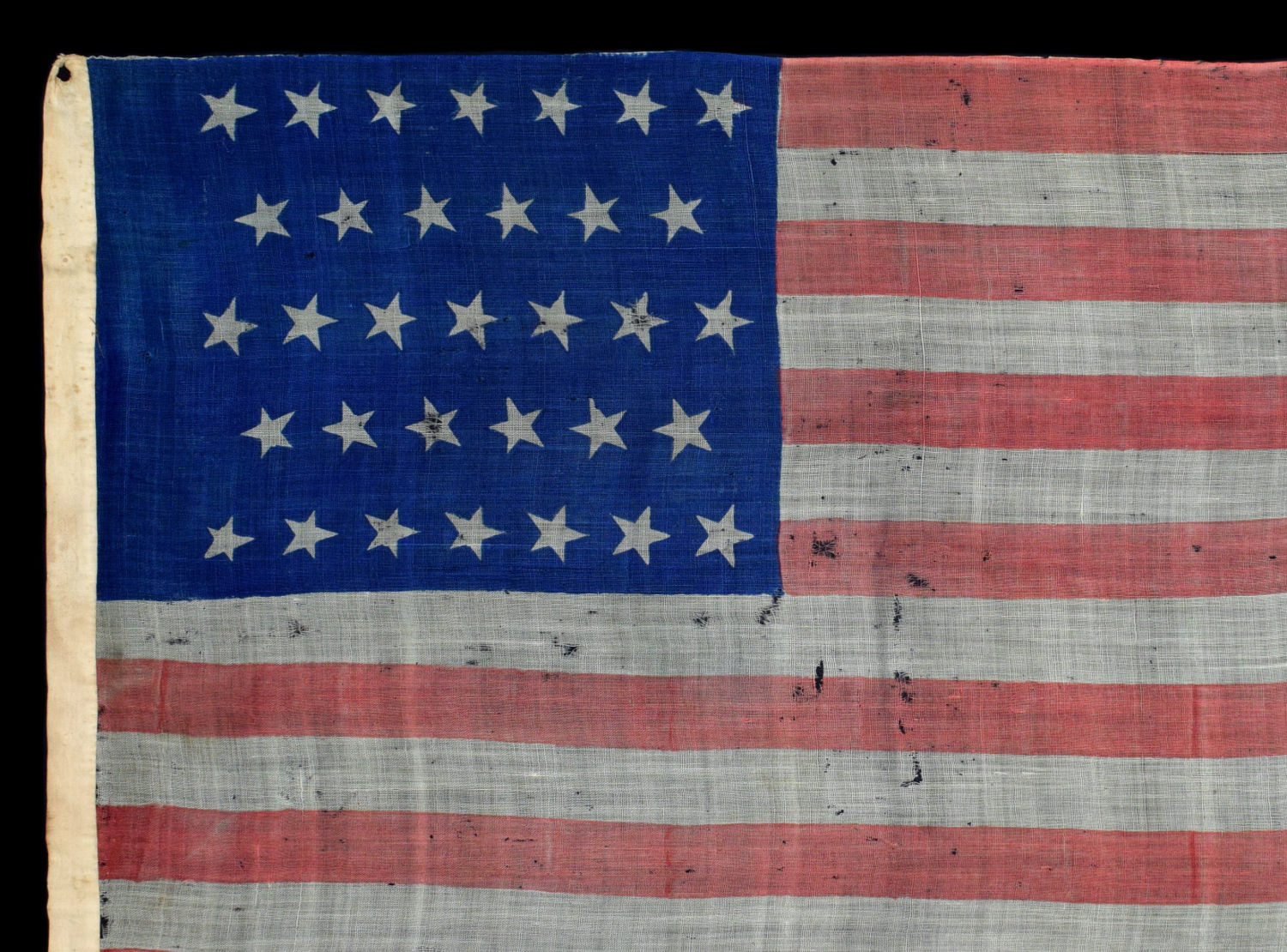33 Star Antique Flag | The Only Example We Have Encountered | Oregon Statehood | Circa 1859-1861
33 Star Antique Flag | The Only Example We Have Encountered | Oregon Statehood | Circa 1859-1861
Frame Size (H x L): 40” x 56”
Flag Size (H x L): 29” x 47”
Offered is a thirty-three star American flag, the only example of which we have ever encountered. This flag was discovered in a trunk, along with a Civil War era yachting ensign. The stars of this thirty-three star flag are arranged in a 7-6-7-6-7 pattern. The stars in the first, third, and fifth rows are canted to the 1:00 position. In contrast, the stars in the second and fourth rows are canted to the 11:00 position. The stars are haphazardly shaped, in that some are skinny while others are starfish shaped.
This flag is made of wool bunting, and its canton and red stripes were placed using a process known as press dyeing. This first press dyeing patent issued in 1849, and several other patents issued in the 19th century for similar, improved processes. The method described in the 1849 patent included using a dye vat in combination with a dyeing frame. The dyeing frame was made, so as to prevent the dye from penetrating portions of the flag that did not need any color (e.g., the stars and the white stripes). Press dyeing never gained widespread use, as it tended to result in minor printing blemishes. For example, with this flag, the blue dye tended to seep into the stars, and the red dye tended to seep into the white stripes.
The hoist strip is made of cotton twill and includes two handsewn grommets. The hoist strip is handsewn to the wool bunting.
The red stripes of this flag are rather orange in appearance, while the blue canton is dark blue in appearance. The First Flag Act of 1777 specified the number of stripes and the colors of the flag, but did not specify the exact shades of each color, which is why some flags—like this one—have unusual colors. The exact shades were not officially specified until 1934. Of further note, the bottom red stripe is approximately twice as wide as the other red stripes, leading to a folksy appearance.
The thirty-three star flag represents the inclusion of Oregon to the Union. Oregon was admitted on February 14th, 1859, and this flag became official on July 4th, 1859. Use of the thirty-three star flag overlapped the beginning of the Civil War, as evidenced by, for example, a thirty-three star flag being flown at Fort Sumter when Confederate soldiers attacked it. Flags associated with the Civil War time period are among the rarest and most collectible of all antique flags. Prior to the Civil War, Americans did not typically display flags for patriotic purposes, and even the military did not regularly use it. Instead, most flags prior to the Civil War were used to mark ships and were massive in scale. The surge in small US flags for patriotic purposes began with the election of Lincoln and the onset of the Civil War.
The thirty-three star flag was official until July 4th, 1861, the time at which the thirty-four star flag became official and began to represent the inclusion of Kansas in the Union.
Conservation Process: This flag was hand sewn to cotton fabric, and both were hand sewn to a mounting board. To prevent the black dye in the cotton fabric from seeping into the flag, it was first washed in a standard wash and then in a dye setting wash. The flag is positioned behind Optium Museum Acrylic.
Frame: This offering is in our Large Distressed Black and Gold Frame.
Condition Report: This flag has some minor stains, holes, and tears. The most significant tears are along the fly end, indicating that this flag was used and suffered wind damage.
Collectability Level: The Extraordinary – Museum Quality Offerings
Date of Origin: 1859-1861
Number of Stars: 33
Associated War: Pre-Civil War
Associated State: Oregon





